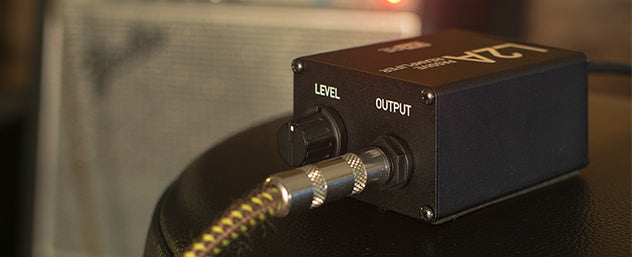"Explain Like I'm 5": Why do I need a reamp box? February 17, 2016 18:05
When we first launched the L2A Re-amplifier kit five years ago, I got a lot of emails asking simply, "what is reamping?" A lot's changed since then. By now, it seems like most people are familiar with the process of patching their recording gear into their guitar gear and then re-recording that "reamped" signal.

However, we do get a lot of questions along these lines:
Do I really need a dedicated device to reamp? Haven't people been reamping since before there were reamps?
Fair questions! The short answer is no, you don't need a dedicated reamp box to start reamping. But for ideal performance in a wide range of situations, you're better off with one.
Can't I just connect a cable right from my interface to my amp?
Technically, yes. But you may get a lot of noise.
Pro-audio gear uses balanced connections, while guitar gear is unbalanced. Connecting the two systems directly creates a path for noisy ground currents to flow into the audio paths.
A reamp box like the L2A solves this problem by isolating the grounds with a transformer. Through the magic of electro-magnetism, the transformer allows signal to pass from the input to the output without a direct connection between their grounds.
But don't take my word for it, here's what the ground lift on the L2A can do:
Additionally, patching right from pro-audio to guitar gear can cause an impedance mismatch. Most of the time this has no audible effect. But sometimes it can register as the reamped signal just sounding "not right." A reamp box can prevent this by recreating the typical output impedance of a guitar pickup.
Can't I just use a passive DI in reverse?
Very clever! But not ideal.
A passive DI is a step-down transformer (usually 12:1) that steps an instrument's volume and impedance down to microphone level. Using it in reverse flips the transformer's ratio, so the DI will step up your signal by 12x. So if your line-level signal for reamping is a standard +4dBu, it will leave the reverse DI at a whopping +25.5dBu! This will clip most guitar pedal and amp inputs.
So, while the reverse DI trick does provide ground isolation, the high ratio of the transformer makes it less than ideal for level and impedance matching.
Can I get started reamping without a dedicated re-amplifier?
Absolutely. I'd never advocate putting your music making on hold while you wait for a piece of gear. If you've got a track that needs reamping today, go ahead and try one of the options above—it may work just fine.
However, if you do get too much hum, or your guitar gear just doesn't sound "right," we do happen to stock the most affordable re-amplifier on the market.
